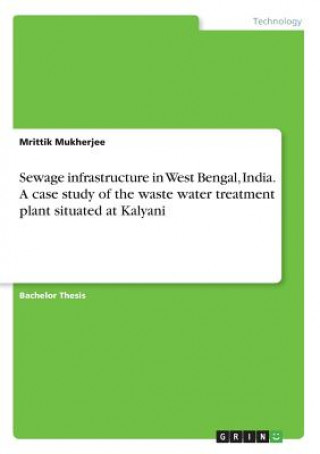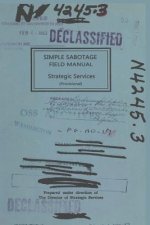
Code: 15483193
Sewage infrastructure in West Bengal, India. A case study of the waste water treatment plant situated at Kalyani
by Mrittik Mukherjee
Bachelor Thesis from the year 2016 in the subject Environmental Sciences, grade: 1.0, Panjab University (Dr. S.S. Bhatnagar University Institute of Chemical Engineering and Technology), course: Chemical Engineering, language: Engl ... more
- Language:
 English
English - Binding: Paperback
- Number of pages: 80
Publisher: Grin Publishing, 2016
- More about this

You might also like
-

Complementarity, State Sovereignty and Universal Jurisdiction
74.87 € -

Wireless Communication
81.63 € -14 % -

Ismailism and Islam in Modern South Asia
91.66 € -15 % -

Irrtum
20.58 € -

Notes Secretes Sur l'Abbaie de Longchamp En 1768
16.89 €
Give this book as a present today
- Order book and choose Gift Order.
- We will send you book gift voucher at once. You can give it out to anyone.
- Book will be send to donee, nothing more to care about.
More about Sewage infrastructure in West Bengal, India. A case study of the waste water treatment plant situated at Kalyani
You get 166 loyalty points
 Book synopsis
Book synopsis
Bachelor Thesis from the year 2016 in the subject Environmental Sciences, grade: 1.0, Panjab University (Dr. S.S. Bhatnagar University Institute of Chemical Engineering and Technology), course: Chemical Engineering, language: English, abstract: Over a period of a hundred an ten years, from 1901 to 2011, Indian urban population has exploded from 25.8 million to estimated 387 million. This has put extreme pressure on the fresh water resources of the nation due to concurrent expansion of agricultural sector, industrialization and urbanization. Thus, a self perpetuating problem has been generated, overload of sewage and lack of fresh water. The purpose of this project is to visit the sewage treatment plant (STP) at Kalyani in West Bengal, India, and try to collect as much information as possible, on the various aspects of the treatment plant, such as demographic significance, sewerage conditions of surrounding areas, total area and individual areas of the various treatment and handling methods, plant capacity, energy requirements, treatment methods employed and number of such facilities, performance of the equipment and processes, quality (both chemical and physical), volume and location of the discharged water, presence of quality control mechanisms, methods of sludge disposal and so on. After collecting the above information, these recorded parameters will be presented in tabular form and hence will enable one to compare this sewage treatment plant with other similar plants in West Bengal and rest of India. This will help us to assess the condition of such plant in the country and comment on the quality of the discharged water from these plants. The collected information will also be used to compare the previous and latest results and efficiency after the retro fitting is complete. By 2050, it is projected that 50% of the Indian population is going to reside in urban establishments, while even now, public services are not able to keep up with the demand of the rapid urbanization. Majority of Indian cities lack sewerage infrastructure or sewage treatment plants. Thus, sewage and other domestic and commercial wastes are discarded into rivers or pond or in open dumps away from cities.
 Book details
Book details
Book category Knihy po anglicky Reference, information & interdisciplinary subjects Encyclopaedias & reference works Reference works
67.18 €
- Full title: Sewage infrastructure in West Bengal, India. A case study of the waste water treatment plant situated at Kalyani
- Author: Mrittik Mukherjee
- Language:
 English
English - Binding: Paperback
- Number of pages: 80
- EAN: 9783668285903
- ISBN: 366828590X
- ID: 15483193
- Publisher: Grin Publishing
- Weight: 113 g
- Dimensions: 210 × 148 × 5 mm
- Date of publishing: 22. November 2016
Trending among others
-

The Silva Mind Control Method (Pocket)
13.20 € -15 % -

Metapolis Dictionary of Advanced Architecture
49.87 € -5 % -

Dictionary of Finance and Banking
16.28 € -6 % -

Dictionary of Business and Management
15.56 € -22 % -

Just My Type
12.69 € -

Ultimate Yorkshire Terrier Book
26.31 € -

Ranger Medic Handbook
16.58 € -

Little Book of Sherlock Holmes
8.39 € -18 % -

Legend Of Zelda Encyclopedia
34.10 € -17 % -

Flavour Thesaurus
20.27 € -21 % -

The Element Encyclopedia of Secret Signs and Symbols
20.89 € -23 % -

Wheelock's Latin
17.71 € -23 % -

Collecting (Vintage) Watches
9.62 € -

My Third Music Theory Book
7.36 € -2 % -

Marvel Encyclopedia New Edition
43.21 € -13 % -

Penguin Dictionary of Symbols
20.89 € -23 % -

Illustrated Herbiary: Guidance and Rituals from 36 Bewitching Botanicals
16.69 € -20 % -

Complete Illustrated Encyclopedia of Dinosaurs & Prehistoric Creatures
14.33 € -30 % -

Dictionary of Biology
17.50 € -13 % -

Drummer's Complete Vocabulary as Taught by Alan Dawson
26.21 € -3 % -

Encyclopedia of Ornament
12.28 € -23 % -

Future Noir
17.40 € -

Dictionary of Accounting
15.46 € -23 % -

Little Dictionary of Fashion
18.84 € -19 % -

Cockpit Confidential
15.35 € -16 % -

Merriam-Webster's Everyday Language Reference Set
21.29 € -15 % -

Practical Encyclopedia of Mosaics
20.89 € -21 % -

Cambridge Double Star Atlas
46.18 € -19 % -

Encyclopedia of Animals
38.30 € -6 % -

Simple Sabotage Field Manual
6.85 € -18 % -

Being Logical
16.07 € -8 % -

ECG Cases Pocket
12.49 € -5 % -

Why Art Cannot Be Taught
26.42 € -19 % -

My First Music Theory Book
7.16 € -3 % -

Jazz & Blues Encyclopedia
24.78 € -13 % -

2000 Colour Combinations
22.01 € -23 % -

Encyclopedia of Goddesses and Heroines
25.29 € -19 % -

My Second Music Theory Book
7.16 € -3 % -

4th Generation Warfare Handbook
16.89 € -

Emergency Food Storage & Survival Handbook
13.92 € -20 % -

Thesaurus of Scales and Melodic Patterns
37.89 € -

New American Ephemeris for the 20th Century, 1900-2000 at Noon
36.86 € -

U.S. Navy SEAL Sniper Training Program
25.19 € -3 % -

American Ephemeris for the 21st Century, 2000-2050 at Noon
24.98 € -

Tao of Charlie Munger
18.73 € -23 % -

Vagabonding
14.02 € -21 % -

The Anarchist Cookbook
30.31 € -

US Army Small Unit Tactics Handbook
32.15 € -

Knitter's Almanac
7.57 € -19 %
Osobný odber Bratislava a 2642 dalších
Copyright ©2008-24 najlacnejsie-knihy.sk Všetky práva vyhradenéSúkromieCookies



 21 miliónov titulov
21 miliónov titulov Vrátenie do mesiaca
Vrátenie do mesiaca 02/210 210 99 (8-15.30h)
02/210 210 99 (8-15.30h)